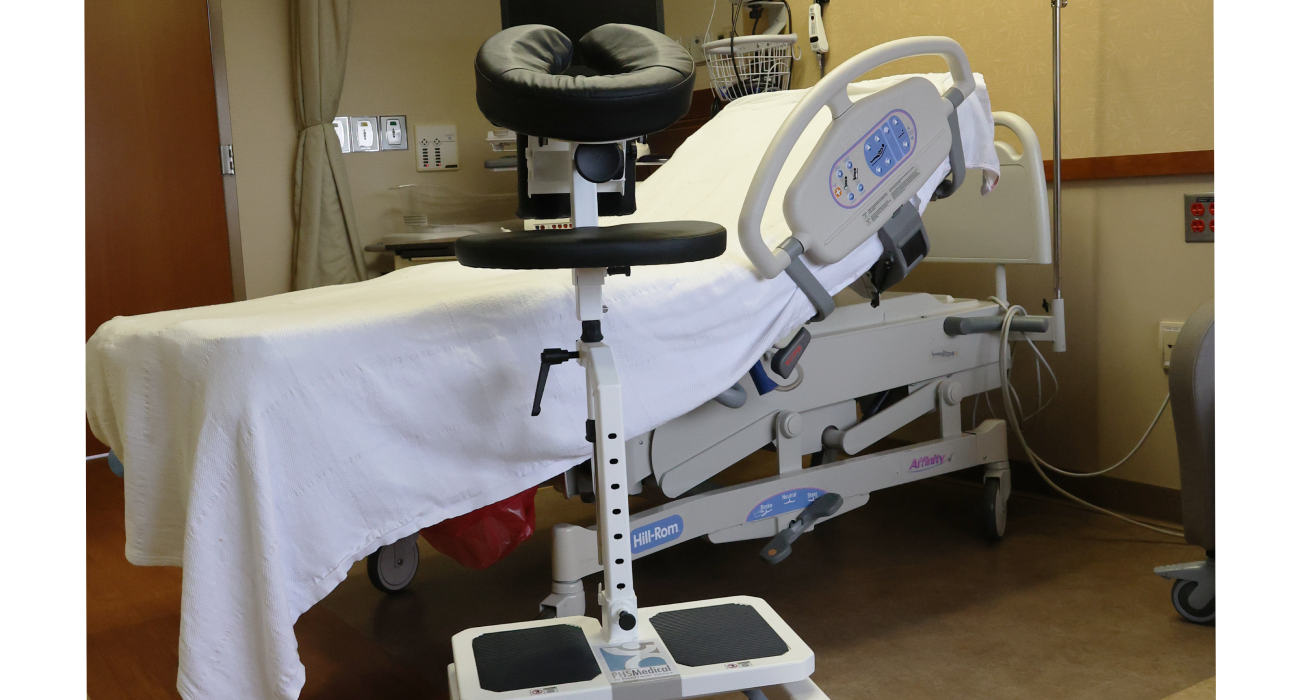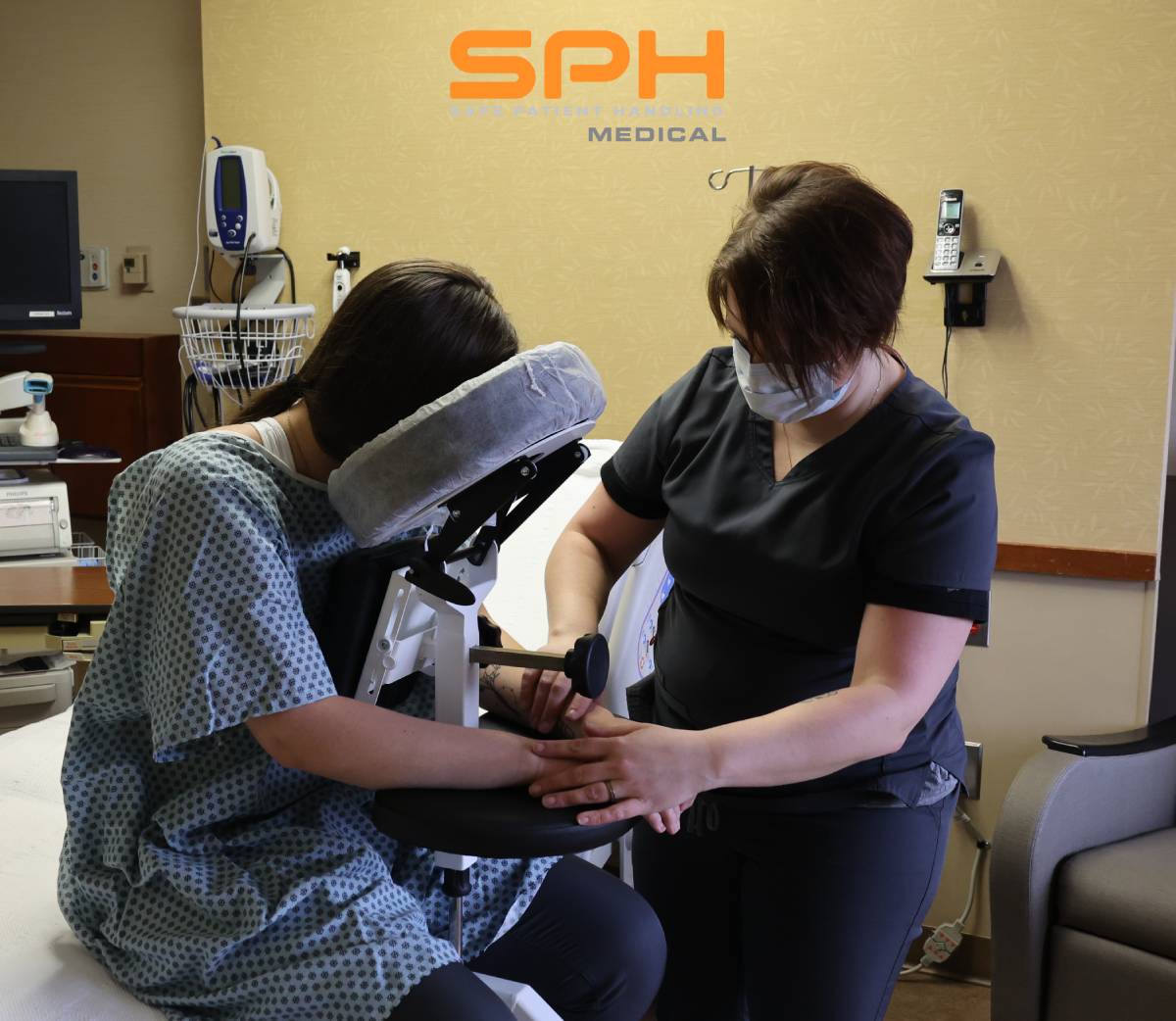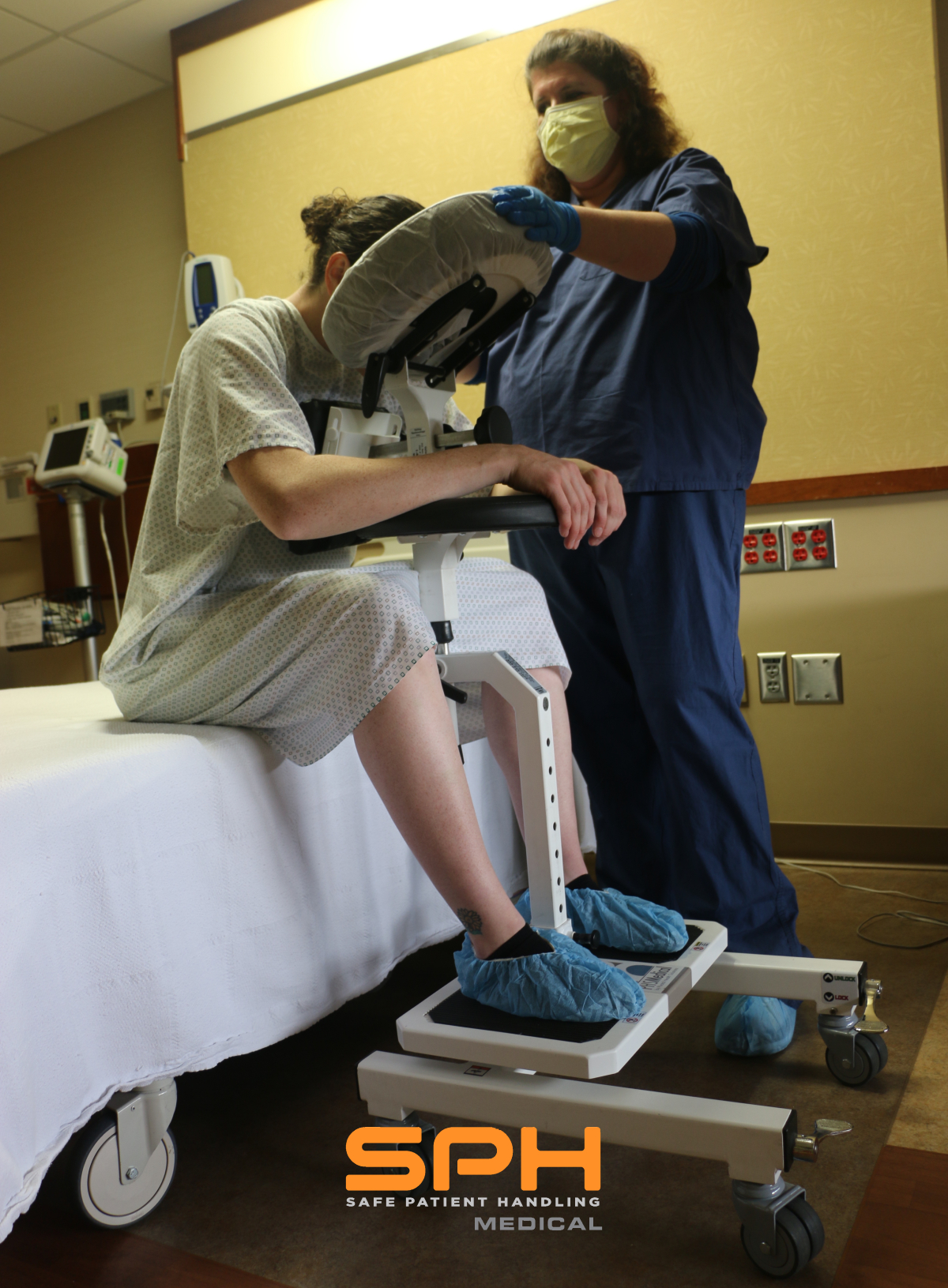Introducing the Unparalleled Epidural Positioning Device
In the realm of labor and delivery, precision, comfort, and safety are paramount. Rising to meet these needs is the Epidural Positioning Device (EPD) from SPH Medical. Also known as the Epidural Chair, this groundbreaking device is a revolutionary tool designed with both patients and healthcare providers in mind. The EPD boasts a host of innovative features, including adjustable height and headrest tilt capabilities, easy maneuverability, and robust construction, all dedicated to ensuring optimal positioning for epidural procedures. The Epidural Chair creates the ideal spinal flexion for anesthesiologists while creating epidural chair safety and minimizing strain and risk of injury to nurses.
The Indispensable Role of the Epidural Chair Safety plays in Labor and Delivery Units
The EPD plays a crucial role in labor and delivery departments across the nation. It assists in achieving precise epidural placement, a critical factor in managing labor pain effectively. With the EPD, healthcare professionals can position patients accurately, reducing the risk of misplaced epidurals and subsequent complications.
Moreover, the Epidural Chair Safety significantly enhances patient comfort during the epidural placement. Its ergonomic design supports the patient’s body, allowing them to maintain the ideal position for an extended period without discomfort. This focus on comfort not only improves the patient experience but also contributes to a smoother, safer, needle placement process.
The Incomparable Benefits of the EPD in Labor and Delivery
The benefits of the EPD extend beyond precision and comfort. It significantly increases safety for both mother and baby by reducing the risks associated with epidural placement. Its design allows for more accurate needle guidance, minimizing the chance of dural puncture and other complications.
Furthermore, the EPD offers substantial advantages for healthcare providers. It reduces physical strain on doctors and nurses, who no longer need to physically support patients during the procedure. This ergonomic advantage can lessen the occurrence of work-related injuries among medical staff, enhancing overall department efficiency.
Proven Effectiveness: Epidural Chair Safety
The effectiveness of the EPD isn’t merely theoretical; it’s supported by real-world examples and compelling statistics. An increasing number of hospitals nationwide are reporting improved patient outcomes and increased staff satisfaction after implementing the EPD in their labor and delivery departments.
A Clear Call to Action
In light of these undeniable benefits, the conclusion is clear: the EPD from SPH Medical is an essential tool for any labor and delivery department. Its combination of precision, comfort, safety, and provider-friendly design make it an invaluable asset for enhancing patient care and staff wellbeing. We strongly encourage hospitals and birthing centers nationwide to consider its implementation. Embrace the future of labor and delivery care with the Epidural Positioning Device – a decision that promises unparalleled benefits for patients and healthcare providers alike.



















